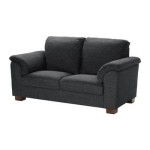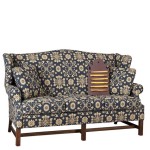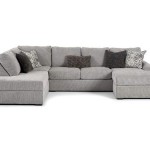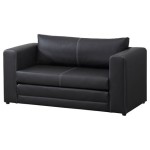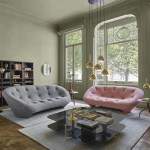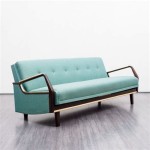Typical Sofa Back Height: A Comprehensive Guide
The sofa, a cornerstone of most living spaces, provides a place for relaxation, conversation, and even napping. Among the many considerations when selecting a sofa, the back height is a significant factor impacting both comfort and aesthetic appeal. Understanding typical sofa back heights and how they influence overall design and functionality is crucial for making an informed purchasing decision.
This article provides a comprehensive overview of typical sofa back heights, explores the various factors that influence the ideal height for different spaces and personal preferences, and explains how back height relates to design style and ergonomic considerations.
Standard Sofa Back Height Ranges
Sofa back heights are not uniform; they vary considerably depending on the style and intended function of the piece. Generally, sofa back heights fall into a range, and recognizing these ranges provides a useful starting point for selection. This section will discuss the standard ranges for low-back, mid-back, and high-back sofas.
Low-Back Sofas: These sofas typically have a back height ranging from 25 to 30 inches (63.5 to 76.2 cm). Low-back sofas often have a more modern and minimalist aesthetic. They can create a more open feel in a room, as they do not visually obstruct the space. A low back may not offer substantial support for the upper back and neck, which might be a drawback for some individuals.
Mid-Back Sofas: This is arguably the most common sofa back height range, falling between 30 and 36 inches (76.2 to 91.4 cm). Mid-back sofas strike a balance between visual appeal and comfort. The height provides enough support for the lower to mid-back, making them suitable for general seating and relaxation. They are versatile and can fit seamlessly into various decorating schemes.
High-Back Sofas: Sofas with a back height exceeding 36 inches (91.4 cm) are considered high-back sofas. These sofas offer substantial back and neck support, making them an excellent choice for individuals who prioritize comfort. High-back sofas can create a more formal and imposing presence in a room and are often associated with traditional or luxurious styles.
These ranges are not absolute; some variations exist across different manufacturers and design styles. However, understanding these general ranges provides a useful framework for evaluating sofa back heights and determining which height best suits your needs.
Factors Influencing Ideal Sofa Back Height
Selecting the appropriate sofa back height involves considering various factors that affect comfort, functionality, and aesthetic compatibility within the living space. These factors include the intended use of the sofa, room size and layout, and the height of the individuals who will be using the sofa.
Intended Use: The primary function of the sofa is a significant consideration. If the sofa will be primarily used for formal seating and conversation, a mid-back sofa might be appropriate. If the sofa is intended for lounging and watching television, a high-back sofa that provides ample neck and back support could be preferred. If the sofa is intended for use in a home theater setting, where reclining is common, then the back height may be less of a concern if the sofa reclines fully to provide support.
Room Size and Layout: The size and configuration of the room can significantly influence the optimal sofa back height. In smaller rooms, a low-back sofa can help to maintain a sense of openness and prevent the space from feeling cramped. In larger rooms, a high-back sofa can help anchor the space and create a more defined seating area. The overall layout of the room, including the placement of other furniture pieces and architectural features, should also be considered to ensure visual harmony.
User Height and Ergonomics: The physical dimensions of the individuals who will be using the sofa should also be considered. Taller individuals may require a higher back to provide adequate support for their upper back and neck. Conversely, shorter individuals may find a high-back sofa uncomfortable, as it may force them to sit too far forward. It is best to test the sofa in person, if possible, to ensure that the back height is comfortable and provides proper support.
Aesthetic Preferences: Ultimately, the choice of sofa back height is also a matter of personal preference. Some individuals prefer the sleek, minimalist look of a low-back sofa, while others prefer the more formal and luxurious appeal of a high-back sofa. The overall decorating style of the room should be considered to ensure that the sofa back height complements the existing aesthetic.
By considering these factors, individuals can make a more informed decision when selecting a sofa back height that meets their specific needs and preferences.
Sofa Back Height and Design Style
The back height of a sofa is closely related to its overall design style. Different design styles often feature specific back height ranges to achieve a particular aesthetic. Understanding these associations can help in selecting a sofa that aligns with the desired design style.
Modern and Contemporary Styles: Modern and contemporary sofas often feature low to mid-back heights. This reflects the minimalist aesthetic that characterizes these styles. The low profile of the back allows the sofa to blend seamlessly into the surrounding space and creates a sense of openness. Clean lines and simple silhouettes are common features, and the back height is typically kept to a minimum to maintain this streamlined appearance. Common materials used may include leather, metal, and engineered wood.
Traditional Styles: Traditional sofas typically exhibit mid to high-back heights. This is consistent with the more formal and opulent aesthetic of traditional design. The higher back provides ample support and creates a more imposing presence in the room. Traditional sofas often feature ornate detailing, such as rolled arms, tufted upholstery, and carved legs. The higher back allows for these details to be incorporated more prominently into the design.
Transitional Styles: Transitional sofas blend elements of both modern and traditional design, and their back heights typically fall in the mid-range. These sofas offer a balance between comfort and visual appeal and can be easily integrated into a variety of decorating schemes. Transitional sofas often feature clean lines and simple silhouettes, but they may also incorporate subtle traditional details, such as slightly curved arms or tufted backs. The mid-back height provides enough support without appearing overly formal or imposing.
Bohemian and Eclectic Styles: Bohemian and eclectic styles are characterized by their relaxed and unconventional aesthetic. Sofas in these styles can feature a wide range of back heights, depending on the specific design elements. Low-back sofas can create a more casual and relaxed vibe, while high-back sofas can add a touch of drama and personality. The key is to choose a back height that complements the overall eclectic mix of furniture, textiles, and accessories. Sofas in this style often use a variety of textiles and patterns to create a unique and stylish look.
Choosing a sofa back height that aligns with the desired design style can contribute to a cohesive and visually appealing living space.
Ergonomic Considerations and Back Support
Beyond aesthetic considerations, the ergonomic function of a sofa back is paramount. The back height directly influences the level of support provided to the back and neck, impacting comfort and potentially affecting posture. Understanding the ergonomic principles related to sofa back height is essential for selecting a sofa that promotes well-being.
Lower Back Support: Ideally, a sofa back should provide adequate support for the lumbar region of the back. This helps to maintain a neutral spine posture and prevent lower back pain. The ideal height for lower back support will vary depending on the individual's height and body proportions. However, as a general guideline, the lower portion of the sofa back should be firm and contoured to provide adequate support to the natural curve of the spine.
Mid-Back Support: For individuals who spend extended periods sitting on the sofa, mid-back support is also important. A sofa back that extends to the mid-back can help to reduce strain on the muscles in the upper back and shoulders. This is particularly important for individuals who work from home or engage in other activities that require prolonged sitting.
Neck Support: High-back sofas can provide support for the neck and head, which can be particularly beneficial for individuals who suffer from neck pain or tension headaches. However, it is important to ensure that the neck support is properly positioned and contoured to provide optimal comfort. Some high-back sofas feature adjustable headrests that can be customized to suit individual needs.
Seat Depth and Angle: The depth and angle of the sofa seat also play a role in ergonomic comfort. A seat that is too deep may force individuals to slouch forward, while a seat that is too shallow may not provide adequate support for the thighs. The seat angle should be slightly reclined to promote a relaxed and comfortable posture. It is important to consider how the seat depth and angle interact with the back height to ensure that the sofa provides optimal ergonomic support.
Testing for Comfort: The best way to determine whether a sofa provides adequate ergonomic support is to test it in person. Sit on the sofa for an extended period of time and pay attention to how your back, neck, and shoulders feel. Ensure that the sofa provides adequate support in all the right places and that you are able to maintain a comfortable and neutral posture. If possible, try out different back heights and seat depths to find the combination that works best for you.
Considering these ergonomic factors when selecting a sofa can help to ensure that you choose a piece that promotes comfort, reduces strain, and supports overall well-being.

The Perfect Sofa Backrest Height Explained By Experts Cozylant

Sofa Dimensions For 2 3 4 5 6 Person Couches Diagrams Included Home Stratosphere

Standard Sofa Dimensions For 2 3 4 And 5 Person Charts Diagrams Engineering Discoveries

Standard Sofa Height Is It Right For You The Stated Home Blog

Sofa Dimensions For 2 3 4 5 6 Person Couches Diagrams Included Home Stratosphere

Sofa Dimensions A Comprehensive Guide To Diffe Couch Sizes

Sofa Dimensions For 2 3 4 5 6 Person Couches Diagrams Included Home Stratosphere

Sofa Dimensions In Mm

Siesta Fabric Sofa Range Sandstone Ifurniture The Largest Furniture In Edmonton Now Landed Calgary Carry Bedroom Living Room Couch Lounge Suite Dining Table And Chairs Patio Over 1000

Enor Furniture Riviera 70 Round Arm Modern Fabric Standard Sofa In Light Gray

